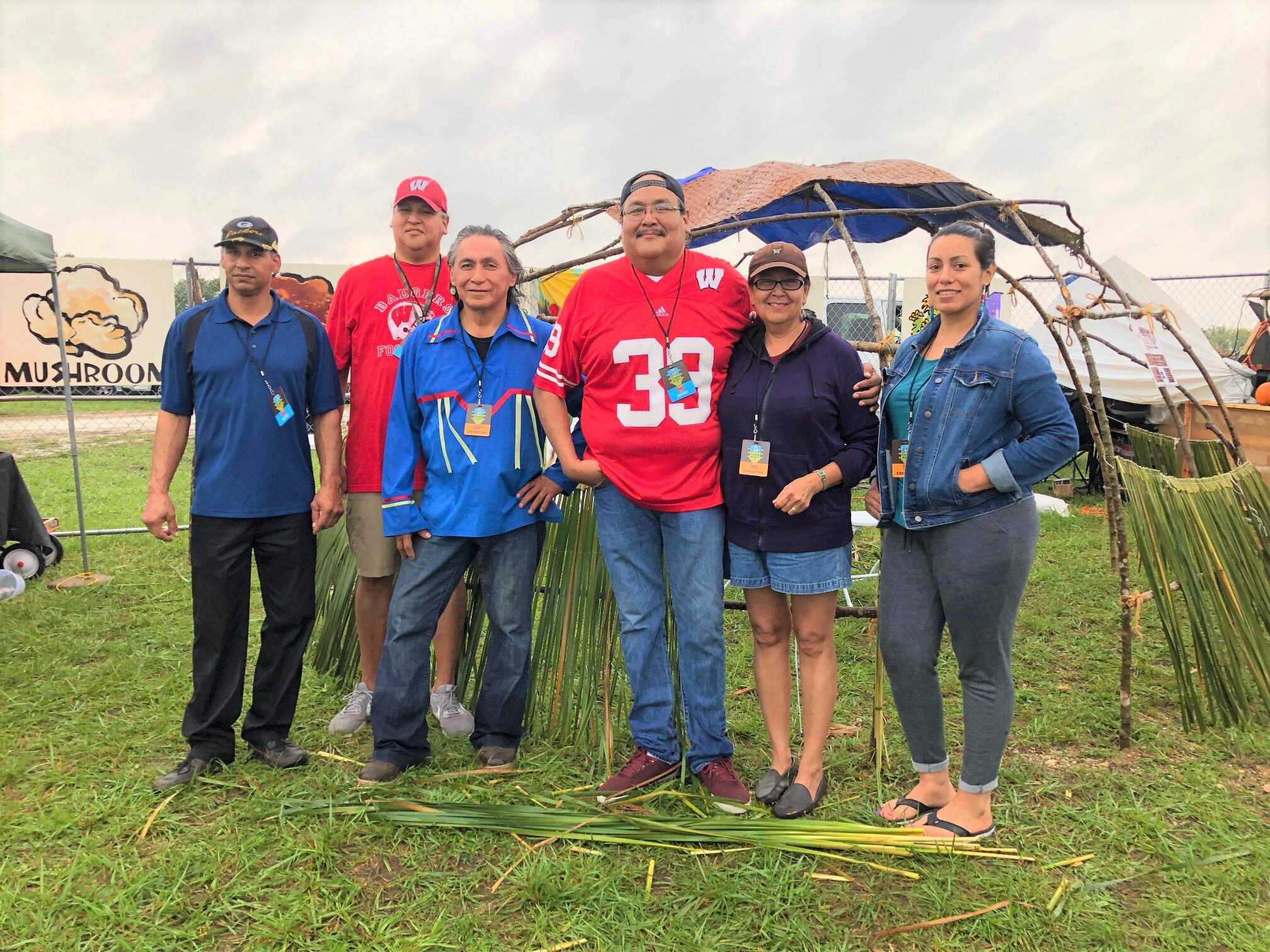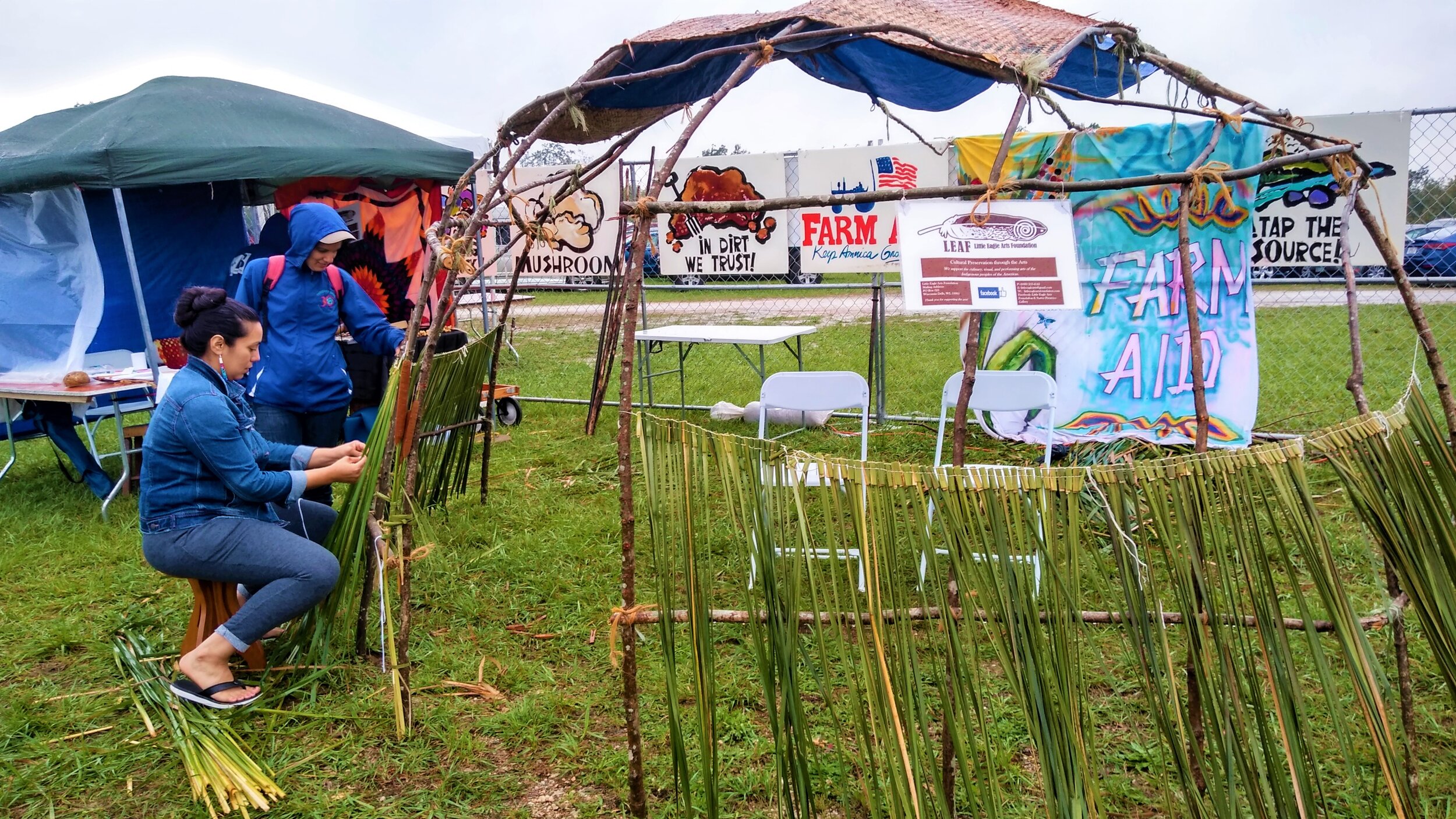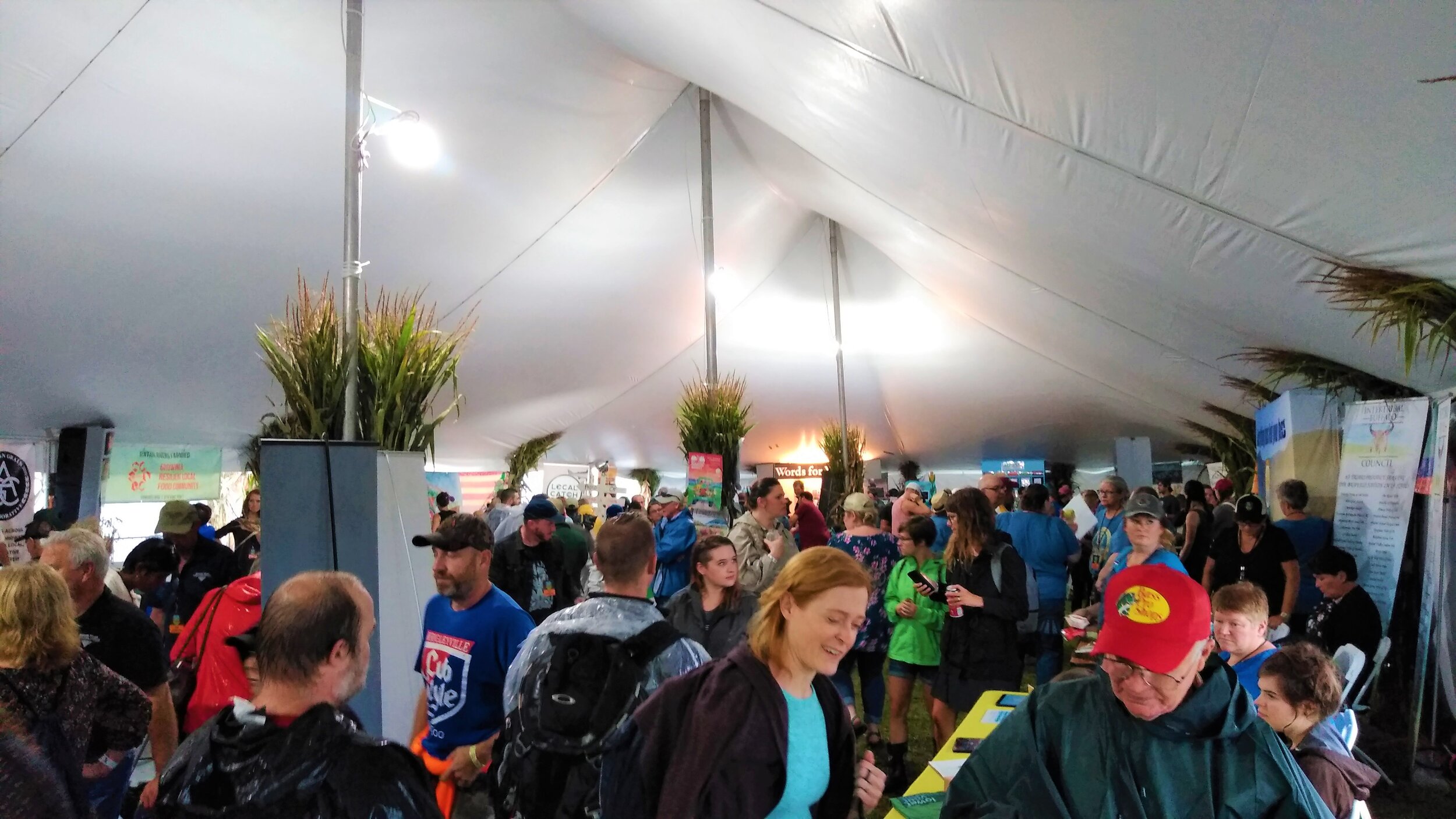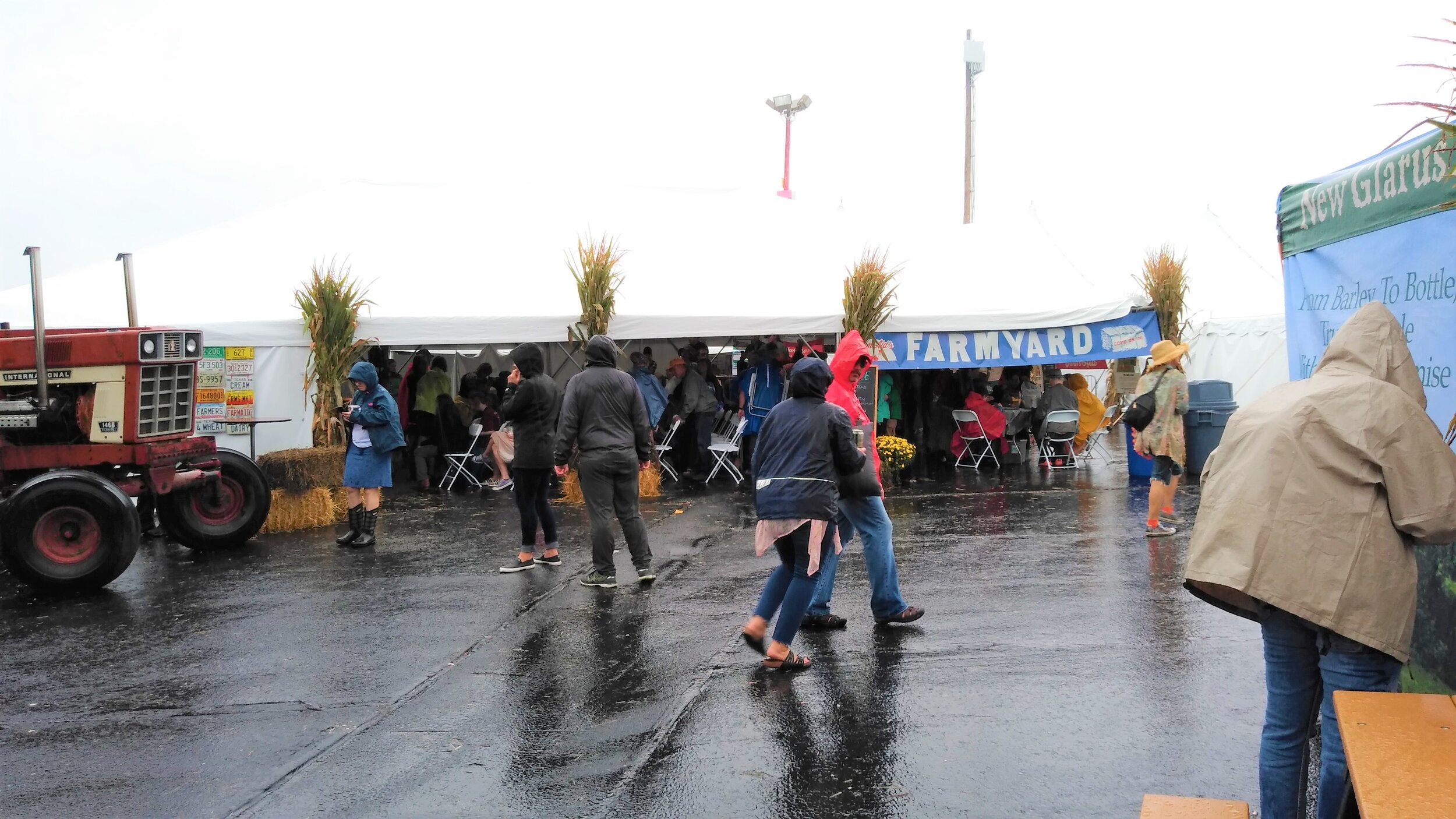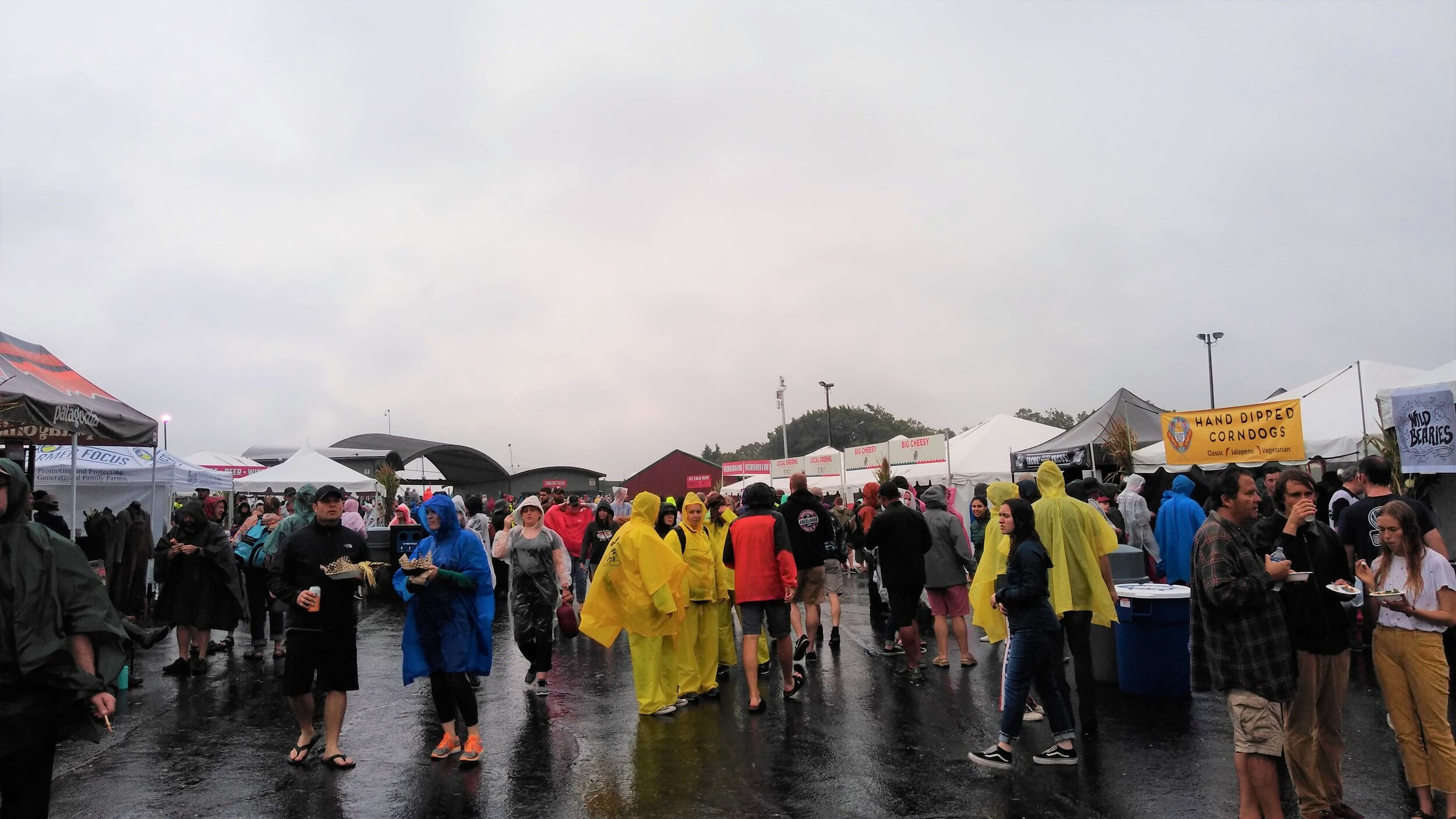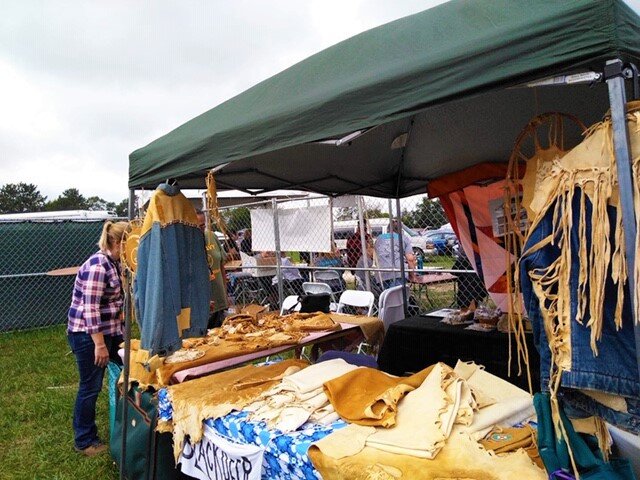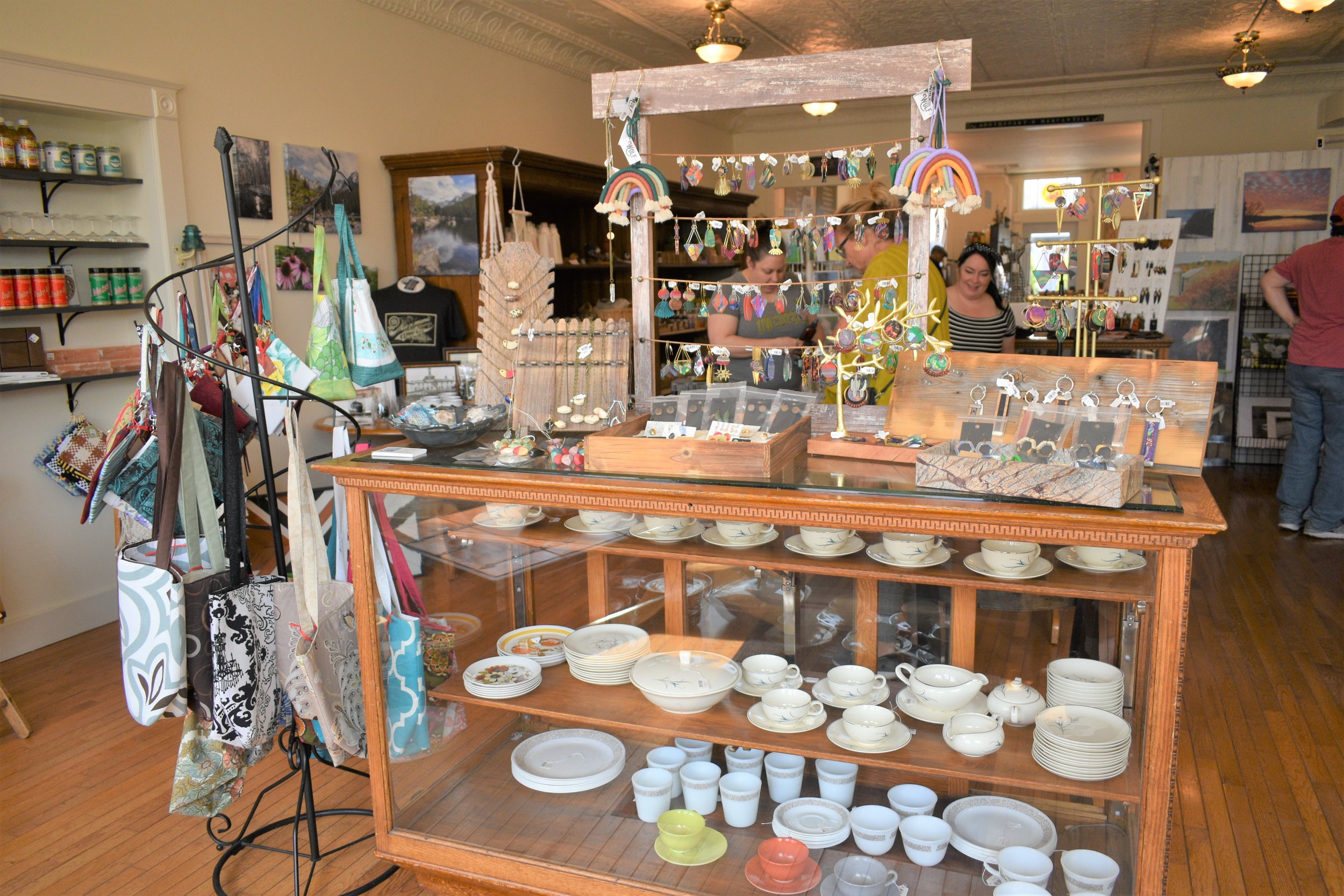Ho-Chunks share traditional ways at Farm Aid 2019
The Homegrown Village held during this year’s 34th Farm Aid concert, brought together farmers, activists, and farm advocacy groups from across the country.
The village offered an opportunity for concert goers to view a multitude of exhibits focused on the nation’s soil, water, energy, and food, many of which offered hands on experiences.
In addition to the village, was a FarmYard stage, a venue for farmers and some of the concert artists to visit some of the issues facing an increasingly volatile industry.
It seems fitting, with the focus of the village being sustainable farming and food, that descendants of the original farmers of the land were represented in the village. Although not the only tribe to be represented, the vast area surrounding this year’s Farm Aid venue happen to be the inherent lands of the Hocak people.
One of the participants in this year’s village, was the Little Eagle Arts Foundation or LEAF.
Founded by Hocak (Ho-Chunk) tribal member Melanie Tallmadge-Sainz in 2013, the foundation seeks to advance the interests of Native American artists.
“I started LEAF six years ago,” Melanie said. “The tribe has been very supportive of me. Not so much the tribal government, but the individual tribal members. When I was Miss Indian America back in 1980, and went off to represent the Ho-chunk people as well as native people in general, one of the things the Wasikxete (elders) told me was to go off and get your education and your experience, but you come back and you help your people.”
She said that she has always had that in her mind, “the resounding message of what we are supposed to do when we go out and get our education.” When she retired from teaching, that’s exactly what she did.
“I did the research that I needed to do for LEAF, and I’ve always worked in the non-profit sector. I was just thinking about being in the southwest as long as I have been, I know it’s an economic engine as far as native arts in the southwest.”
Melanie shared that was they way it used to be in the Wisconsin Dells area where she grew up, but today Melanie feels the whole brand of ‘the water capital of the world’ totally eliminated the true connection to the river, the rocks, and the native peoples that have called the Dells home for thousands of years.
“When you are swimming in blue water, you don’t really care where the water came from, you are there for shear entertainment. Don’t get me wrong, I appreciate those hard-working people that save up all year long to spend a week in the Dells at the all-inclusive waterparks. But I want more for our people (Hocak), especially the artists,” she said.
Sitting in the traditional cipodoke (ci-wood,podo-round,ke-house) during my interview, Melanie motioned toward the bottom side of the cipodoke, to the beginnings of a covering made from cattail leaves that her daughter Vanessa was helping her weave.
“When I look at this cattail, it’s not just a mat woven together with string; there is language, there’s the harvesting, there’s the foraging, there’s all that knowledge that goes along. You can’t buy this stuff at Jo-Ann Fabrics; you have to experience it. That’s the kind of stuff that keeps us sane, keeps us healthy physically, mentally, emotionally stable. There’s that creative process,” Melanie said.
Mentioning her son who received a degree in cognitive science she said, “There’s something special that goes on when you are engaged in creative activities in the brain. It’s almost like when you are engaged in yoga to where your brain goes and the brain waves. Art heals. For all the historical trauma that we’ve gone through after being removed so many times from Wisconsin, we’ve got to hang on to those things that we do that really makes us healthy and well, to heal from that trauma. That’s what we are doing: preserving our culture through the arts with LEAF.”
She motioned towards a display across the way set up by the Worm Farm Institute. “The folks set up over there are with Worm Farm Institute. They have the Fermentation Fest every other year. When we started the blue wing mural in Reedsburg, there was a bus of people that came to Fermentation Fest.”
She continued, “They came up from Milwaukee, they were all into what we were doing in terms of it was like a reunion of Blue Wing (Ahu Cho means Blue Wing in Hocak, and is a named Hocak village) descendants. We did the mural, had singing, art, and food, and stuff like that. I went on the bus and explained to them the significance of blue wing and yellow thunder, that if they hadn’t got their homestead land, we wouldn’t be in Wisconsin anymore as far as the Ho-chunk people.”
“The people coming up from Milwaukee to Sauk County was a concept they realized they needed in their lives, coming from the city to the rural areas was rest and respite, and creativity. We developed that concept to be the Rural Urban Flow. LEAF is a part of it.”
When asked about how LEAF became involved with Farm Aid she said, “There are like 14 entities as well as Worm Farm. When Carolyn Mugar (Executive Director of Farm Aid) and her colleges found out about the flow, they wanted to learn more. They invited us down to Alice’s Garden, which is a community-run garden in Milwaukee. It was the right time at the right place: synchronicity. She wanted to know about the Ho-chunk people and how LEAF works with all tribes from the state of Wisconsin. One of the great things about Carolyn and her crew is that they really honor the first nation’s peoples. They give that respect to the original stewards of the land; in this case it’s the Ho-chunk. I was able to put her in contact with brother Andy (Thundercloud) and my nephew Jon Thundercloud, Bill Greendeer, and Levi Blackdeer. It all came together. That’s what brought LEAF to Farm Aid.” It should be noted that Levi Blackdeer, a Warrior and Vietnam Veteran, shared with village goers traditional hide tanning that he has done his whole life.
“I was thinking about his (Andy) mom, my other Nani (mother), Irene Thundercloud. She would have been so proud. Whenever she sang, she sang with her full gusto. That’s what he did (opening the concert). He said what he did, he did in Ho-chunk, in terms of welcoming people to our original homelands and to share that song, and for him to be in a bonnet (worn by Warriors) that he borrowed from Levi because he is a veteran. People probably don’t know all those little aspects of him, but for us that makes it all the more special knowing we have a veteran, someone from our traditional court. That’s the Ho-chunk way, that’s how we are supposed to do it. It’s so wonderful,” she said.
As a gentle rain fell at the end of my interview with Melanie, she looked up towards the sky and said, “It’s been interesting. We were sitting here in the rain. To native people, rain is a blessing. Our planet needs rain. Our Mother Earth-she’s trying to heal herself in the best way she can. It just so happens to be with water and rain cleaning her. The maixetes (non-natives), the first thing they talk about is complaining about the rain,” she said with a quiet laugh.”
Hocak tribal member Bill Greendeer who was helping teach about the Hocak at the LEAF cipodoke shared he too was grateful for the opportunity to be welcomed by Farm Aid to be a part of the Homegrown Village.
“Part of the whole deal is if you are going to be Farm Aid, let’s go back to the indigenous ways of growing things and harvesting all the wild foods out there,” he said.
An advocate for the idea of ‘Rights of Nature’, the recognition and honoring that Nature (ecosystems) have rights just as human beings, Greendeer believes everything is connected. During the course of the event, Greendeer said that he spoke with a lot of people that had no idea about the rights of nature and acknowledged that he spent a good deal of time helping them to understand the concept.
“This is all bound together. We all have walked on this earth the same way for thousands of years. It was all about honor and respect. It was all about not taking but to share. It is about being able to share with whoever we are with,” Greendeer said.
“Farm Aid to me is pretty cool as long as they would kind of learn about what we have here: the knowledge we have. It’s amazing to be able to teach people what we knew a long time ago. I’ve been talking pretty steady all day here, teaching people about the lodge and the coverage, how things used to be a long time ago.”
Gesturing at the cipodoke, he noted that you could stay in a lodge and spend time in the winter with temperatures at -30 to -40 and you’d still actually be okay.
“We have to walk on this earth. If we can walk on it the right way with the people that are from that part of the earth, it’s amazing what you can really learn. People have to wake up a little bit and just be able to see what we have here,” he said.
Greendeer stressed that there is rich food everywhere, you just need to know where to look, and mentioned when you see townships cutting the sides of roads, foods can be found in what most see as debris.
He encourages everyone to get to know the foods that may not be conventional, but have always been available and eaten for a very long time in the past. Just to know the foods and be able to feed your family with it, your food that is natural and native is amazing! It’s great! I’m seeing more and more people that are picking up the knowledge to be able to eat out in the country.
“We have to learn to not waste. We have people who will walk behind and pick up the food and share it. We should be doing it way more. That’s what I really feel in my heart. I want to be able to teach people. I want to tell people what’s going on, learn what we have here, learn the medicine.”
He said that there are so many plants right under our feet that we don’t even think about that we could actually be eating, sharing, and using to heal ourselves and take care of each other.
“It’s great to be able to teach people that this was once Ho-chunk land. Why not teach them about their history right here? I’ve been talking to a lot of people who had no idea what a structure like this would be like to live in, actually just sit here and sit up against one of these poles that are meant to be leaned up against. People are amazed that you can sit in comfort and relax on the earth. It was quite an opening for them,” he said.
Greendeer said for him it’s good to see others excitement about what he shares.
“It’s really cool to be part of this. I’m amazed that there has been that many people wanting to know what was going on here, looking and watching the way the cattails are being weaved together, the lodge we built. All of the people with the knowledge are coming over and asking us. That’s great. We love to share.”
“I’ve been trying to really hang out with people that take care of the earth. There’s a lot of people like that and they are not all native,” he said with a smile.
Join DriftlessNow.com tomorrow, September 27th, for another article on Farm Aid 2019.
